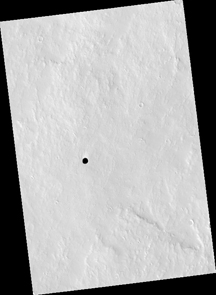
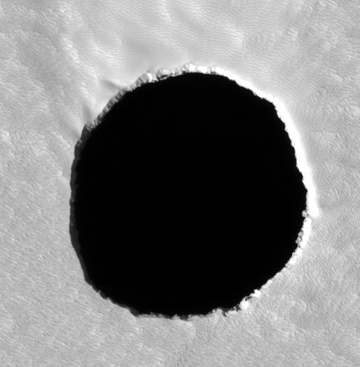
On 23 May 2007, the University of Arizona in charge of the HiRISE camera on the Mars Reconnaissance Orbiter published on their website an image of a very black hole found on Mars' surface. The image was brought to my attention by my friend, Mark Noyes.
This is a very unusual Martian surface anomaly not seen before. The ASU HiRISE team had this to say about this feature..
" The HiRISE camera is very sensitive and we can see details in almost any shadow on Mars, but not here. We also cannot see the deep walls of the pit. The best interpretation is that this is a collapse pit into a cavern or at least a pit with overhanging walls. We cannot see the walls because they are either perfectly vertical and extremely dark or, more likely, overhanging."
Such a pit would be an amazing find on Mars. There has been recent speculation that Mars has deep cavernous pits and the significance of this is that life may safely live in these caverns sheltered from the ravages of unshielded space radiations.
However, there may be another scenario as posted by Mike Lomax on cydonia@yahoogroups.com. In a close up of the rim wall it appears that this may be a filled crater.
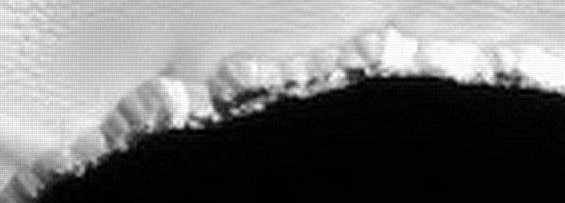
If you look at the area of the rim as cropped below, you will notice black areas behind crater floor material. This would indicate that the crater floor is a filled floor rather than a deep hole.
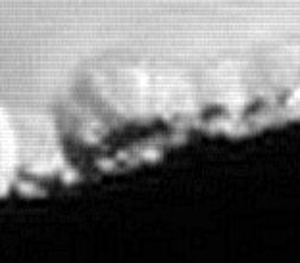
If this is a filled crater floor than the mystery deepens..what is this material made of? Is this a lake of some unknown black, unreflective material? A dark, basaltic lava filled crater? This dark material may also be tied into the black seeps of Mars I had been researching.
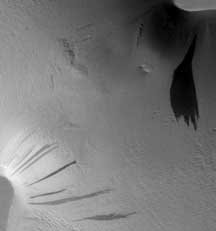 One of many dark Martian seeps catalogued on my site.
One of many dark Martian seeps catalogued on my site.
A possible cross section of how the cavern hypothesis would look. The opening is about 100 meters, and it would have to be extremely deep to show absolute blackness in its' interior.
An example of a crater filled with a darker material than the crater walls. If the filled material was of extremely low albedo, it would appear to be a hole, as dramatized by filling in the crater floor with a dark color. Image from HiRise website
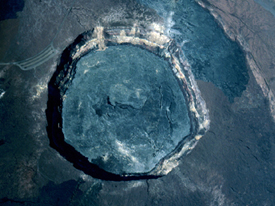
Lava lake in Halemaumau Crater. Note that there is no raised rim or ejecta. Courtesy Mike Lomax
In either case, whether this is a very deep, bottomless pit or a crater filled with an unknown black material, it bears immediate attention and further scrutiny, and a possible dedicated mission from NASA to explore this area. In any of the above scenarios, this may be the best place to find life on Mars.
Efrain Palermo